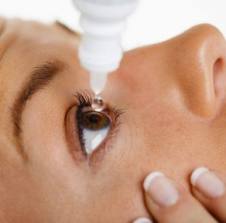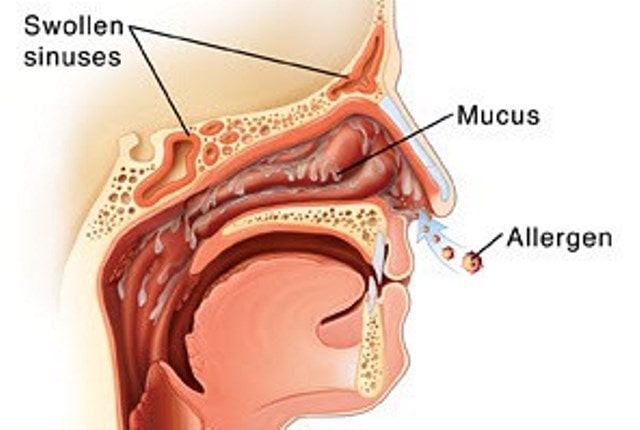Bacterial pink eye refers to a type of pink eye, which as the name suggests is caused by various bacterial infections. It is generally characterized by quick redness of conjunctival, eyelid swelling as well as mucopurulent discharge. Learn symptoms, causes, treatment, and prevention of bacterial conjunctivitis.

Did you know that chlamydia trachomatis, one of the bacterial cause of pink eye is the leading cause of preventable blindness in newborn babies? In this discussion, we are going to get into the details of bacterial pinkeye, also known as bacterial conjunctivitis. Some of the areas that will be tackled include the following:
- What is and what are the causes of bacterial pink eyes?
- What are the signs and symptoms of bacterial conjunctivitis?
- How is bacterial pink eye diagnosed?
- How long is bacterial pinkeye contagious?
- When should you see a doctor when you have bacterial pink eye and how can you prevent this infection?
- What are some of the bacterial pink eye cures and treatments you can rely on?
This is not all that we have tackled. You will be enriched with much information on bacterial conjunctivitis; you are unlikely to find anywhere all written on a single webpage.
What is Bacterial Pink Eye or Bacterial Conjunctivitis?
Bacterial conjunctivitis, as in the case of pink eyes or conjunctivitis in general refers to the bacterial infection of the eyes outermost mucous membrane known as conjunctiva. The infection often extends to the inner eyelid surface (tarsal and palbebral conjunctiva) and can go up to the bulbar conjunctiva and fornices.
Causes of Bacterial Pinkeye or Conjunctivitis
You must be guessing what causes bacterial conjunctivitis. For those who do not know, bacterial pink eyes are caused by a various bacteria that might get into or around the areas of your eyes. Some of the common bacteria that cause bacterial infections that can lead to pink eye include:

- Pseudomonas aeruginosa, Streptococci pneumoniae and Staphylococci aureus bacteria that causes the non acute type of bacterial infection
- Cat-scratch disease
- Chlamydia trachomatis, which is known to cause bacterial conjunctivitis, which does not have eye redness
- Gonorrhea
- Type B Haemophilus influenzae
- Infection by staph
- Another common bacterial infection that is often noticed in newborn is Chlamydia trachomatis. This type of bacterial pinkeye can lead to purulent or acute pinkeye.
As you have seen, some of the causes of bacterial conjunctivitis also cause STDs. It is good to be examined the moment you suspect you are suffering from any of the below bacterial pinkeye symptoms. Other possible causes of bacterial conjunctivitis include Proteus mirabilis, Streptococcus viridians, and Moraxella lacunata, Neisseria meningitidis
Symptoms of Bacterial Pinkeye or Conjunctivitis
When you are suffering from bacterial conjunctivitis, you will have a number of symptoms. Most of these bacterial pink eye symptoms are much similar to symptoms that result from other causes and they will typically appear after 2 to 5 days of infection – the normal incubation period for bacterial conjunctivitis. The bacterial pink eye symptoms could be on one eye or both the two eyes. The most common symptoms you are likely to suffer from include:

- Eye white redness – conjunctive redness
- Mild pain
- Swollen upper eyelids that will make your lower eyelid to look droopy. This condition is known as pseudoptosis.
- Eye swelling, grittiness in the eye
- The production of thick discharge that is greenish or yellowish in color –this discharge is due to the pyogenic bacteria that produces pus.
- Swollen lymph node, which are located in front of ears
- Eye itchy feeling, stingy feeling and eye irritation due to the discharge and grittiness
- The production or formation of pseudomembranes that cover the conjunctiva is a symptom bacterial of conjunctivitis associated with β-hemolytic streptococci, and Neisseria gonorrheae bacteria. However, to children who are not immunized Corynebacterium diphtheriae could cause this condition.
When compared to viral pink eye infection, the infection will cause more drainage. In fact, people who suffer from bacterial conjunctivitis will often complain of their inability to open eyes when they wake up due to the crust formed on their eyelids due to the heavy discharge. You might need a warm washcloth to help remove the discharge to be able to open your eyes.
Other Symptoms of Bacteria Conjunctivitis or Pinkeye
Besides the above bacterial conjunctivitis symptoms, you ought to know that bacterial conjunctivitis is at times accompanied with the following symptoms and conditions.
- Hyperacture bacterial pink eyes or conjunctivitis – This is a very acute and severe bacterial pink eyes infection, which is, causes a yellowish-green discharge that quickly returns even when it has been wiped. It also develops much rapidly than the other types of bacterial pink eye infections. Suffering from Neisseria meningitides needs treatment since it can lead to systematic infection and meningeal that is fatal.
- Chronic Bacterial Pink Eyes – This type of bacterial pinkeye that develops alongside other closely related conditions such as blepharitis (inflammations) which will favor the growth of the bacteria on your eyelids. You will have warmth and flaky debris on your eyelids.
- Chlamydia Conjunctivitis – This type of bacterial pinkeye infection is more in newborns and children. It makes often causes eyelids to swell and a pus discharge that occurs within five to around 12 days after a child has been born. You need to try home remedies for pink eye or get treatments and cures since the child is very vulnerable at that age.
- Gonococcal Pinkeye – This type of conjunctivitis affects newborn babies, just as in the case of chlamydia conjunctivitis. The newborn baby will have swollen eyelids, thick pus discharge and red eyes. It occurs between 2 to 4 days after birth.
- Trachoma – when you have chronic follicular pinkeye infection, scarring of the cornea might occur. This condition often repeatedly affects children below 10 years, mostly in developing nations.
Conjunctivitis or Bacterial Pink Eye Diagnosis
Diagnosis of bacterial pink eyes can be accomplished by health care works such as doctors, nurses, etc. Both your medical history and symptoms will carefully be studied to help narrow down to the type of pink eye infection you have and eliminate the other possible causes of pink eye.
Afterwards, the health care worker who is diagnosing your pinkeye might take a sample of the discharge you are having and sent it to the laboratory for further analysis. This will be a more precise way to identify the exact cause of conjunctivitis you are suffering from and come up with best way to treat it. Some of the common diagnosis used include gram and stain cultures in case of the non-responding, chronic or Hyperacture infection of conjunctivitis. This test has higher accuracy but is relatively expensive. Differential diagnosis for bacterial pink eye is used both the symptoms to differentiate it from viral pinkeye infection.
Treatment of Bacterial Pinkeye – Antibiotics and Medical Therapy
If you are suffering from bacterial pink eyes, expect the symptoms to disappear after 7 to around 10 days if the condition is not treated. However, with treatment, bacterial conjunctivitis will disappear within 2 to 4 days of medication. If you are suffering from bacterial pinkeye, you can go back to your place of work or school, 24 hours after the symptoms you had have begin disappearing once you begin pink eye treatment.
Unlike the viral pink eye, bacterial pinkeye is treatable. The common treatments used for bacterial pink eye are mainly antibiotics, which will kill all the bacteria that cause bacterial conjunctivitis. Most of the antibiotics used to treat bacterial pink eye come in forms of antibiotic eye drops, ointments and pills. People who any of these medications have shown to get well after around 3 days while those who do not use them might require 5 days for the bacterial pink eye symptoms to start disappearing. If you begin using medications late, you will take 4 days to begin showing improvement.
If your eyes are particularly irritated, you could opt for Similasan Irritated Eye Relief since it works well in soothign your eyes while you wait to get better.
When it comes to the specific antibiotics to use for pink eye, you have a wide choice to go for. However if you have an acute infection of bacterial conjunctivitis, you should go for 3rd generation for 4th generation of sodium sulfacetamide, fluoroquinolones or polymyxin/trimethoprim. These medications will have to be used for a little longer, around 7 to 10 days. If you are diagnosed with meningococcal pink eye infection, systematic penicillin is use treat it, if the infection is sensitive to penicillin.

Other medications you should try include Gatifloxacin 0.5% drops, Moxifloxacin 0.5% drops, or Besifloxacin 0.6% drops. In addition, you can use the Aminoglycosides such as Tobramycin 0.3% drops and Gentamicin 0.3% drops. Ointments such as Bacitracin/Polymixin B ointment, Bacitracin ointment, and Erythromycin 0.5% ointment can of help too if you want to cure bacterial pink eye infection,
When using antibiotic eye drops, the affected person should be on their back barely close their eyes and then the required number of eye drop will be added on the inner corner of the eye to form a small pool. The patient should them open his or her eyes to let the medicine flow gently to the conjunctiva which is affected without forcefully opening their eyes.
Finally, on treatment of bacterial pinkeye, sexually transmitted disease and infections STDs/STIs are also one of the causes of pink eye in newborn babies, also known as neonatal pink eye. If ignored, they could lead to blindness. Most of the STDs/STIs bacterial conjunctivitis infections cannot be fully managed by normal antibiotics only. For instance, newborn babies who are found to be suffering from gonorrhea caused pink eye will need on injection of ceftriaxone followed by 2-3 weeks use of oral erythromycin or tetracycline. On the other hand, those with chlamydia pink eye can go for macrolides such as 1-gram single dose of Azithromycin or Erythromycin, together with tetracycline. Pregnant mothers should however not use tetracycline.
How Long Is Bacterial Pink Eye Contagious?
As we discussed bacterial pink eye, we ought to make it clear to everyone on how long bacterial pink eye or bacterial conjunctivitis will be contagious. You should be able to return to school, work or send your child to day care 24 hours after you have initiated medications to treat or cure bacterial pink eye. However, if you are not under any treatment, you might take longer, typically until the symptoms of bacterial conjunctivitis begin to improve. All these are necessary precautions due to the contagious nature of this infection.
Should You See a Doctor If You Have Bacterial Conjunctivitis
In case you have bacterial pink eye, it is highly advisable you see a doctor for diagnosis and prescription of the correct antibiotics to use. This is particularly important if you have other symptoms such as cough, earache and running nose since these conditions might require other antibiotic pills on top of the antibiotic eye drops you might be using on your eyes. Lastly, you should see a doctor to help identify any further spread of bacterial infection since it is very contagious.
Prevention Contagious Bacterial Pink Eye – Risk Factors
Bacterial pink eye is highly contagious and it will easily spread form one individual to another. It is therefore very important to ensure you adhere to some of the below tips:
- Avoid using a prescribed antibiotic eye drops or ointments used for old treatments, especially on a non-infected eye. This could lead to contamination of further re-infection with bacterial pink eye disease.
- Do not touch your eyes with unwashed hands
- Avoid reusing face towels that have not been washed or reusing tissue to wipe your face.
- Ensure you always clean your contact lenses, as they could be responsible for the spread of bacterial pink eye.
We have not exhausted ways to prevent of this very contagious conjunctivitis infection. However, we have covered on contagious pink eye in details including how long it will be contagious, how it spreads as well as many ways to prevent it. See Is Pink Eye Contagious – How contagious is pink ye and Prevention for a comprehensive coverage.
Conclusion
We have looked at what is bacterial pinkeye, cause of bacterial pink eye, also known as bacterial conjunctivitis, the symptoms you will have when you have bacterial pink eyes as well as prevention of this condition since it is very contagious. There was also one of the most comprehensive coverage on how to cure bacterial pink eye or bacterial pinkeye treatments. We hope you now have a better understanding of bacterial pinkeye.
More on Pink Eye/Conjunctivitis
- Pink Eye Cure and Treatments – Diagnosis, Cures and Treatment of Different Types Pinkeye or Conjunctivitis
- Remedies for Pink Eye – Natural and Home Conjunctivitis or Pinkeye Remedies
- Pink Eye Symptoms –What is, Types, Causes, Sign, Relief and Pinkeye Newborns, Children and Adults
- Viral Pink Eye – Causes, Symptoms, Cures, Treatments, Prevention Diagnosis of Viral Conjunctivitis
- Contagious Pink Eye – Is Pink Eye Contagious? How Long, Prevention of Infectious Conjunctivitis
- Eye Drops for Pink Eye – Use, Side Effects, Antibiotic, Over the Counter and Ointments for Conjunctivitis
Further Suggested Reading on Red Eyes
- Causes of Red Eye – Symptoms, Reasons and Why You Have Red Eyes
- Red Bloodshot Eyes –Symptoms, Causes, Get Rid, Cures, Remedies of Blood Shot Eyes
- Get Rid of Red Eyes – Cures, Remedies, Redness in Eyes Treatment
- Red Eye in Photos – Causes, Prevention and How to Fix Red Eye Pictures
- Red Eye in Dogs – Causes, Symptoms, Cure, Remedies, Treatment of Cats and Dogs with Red Eyes


